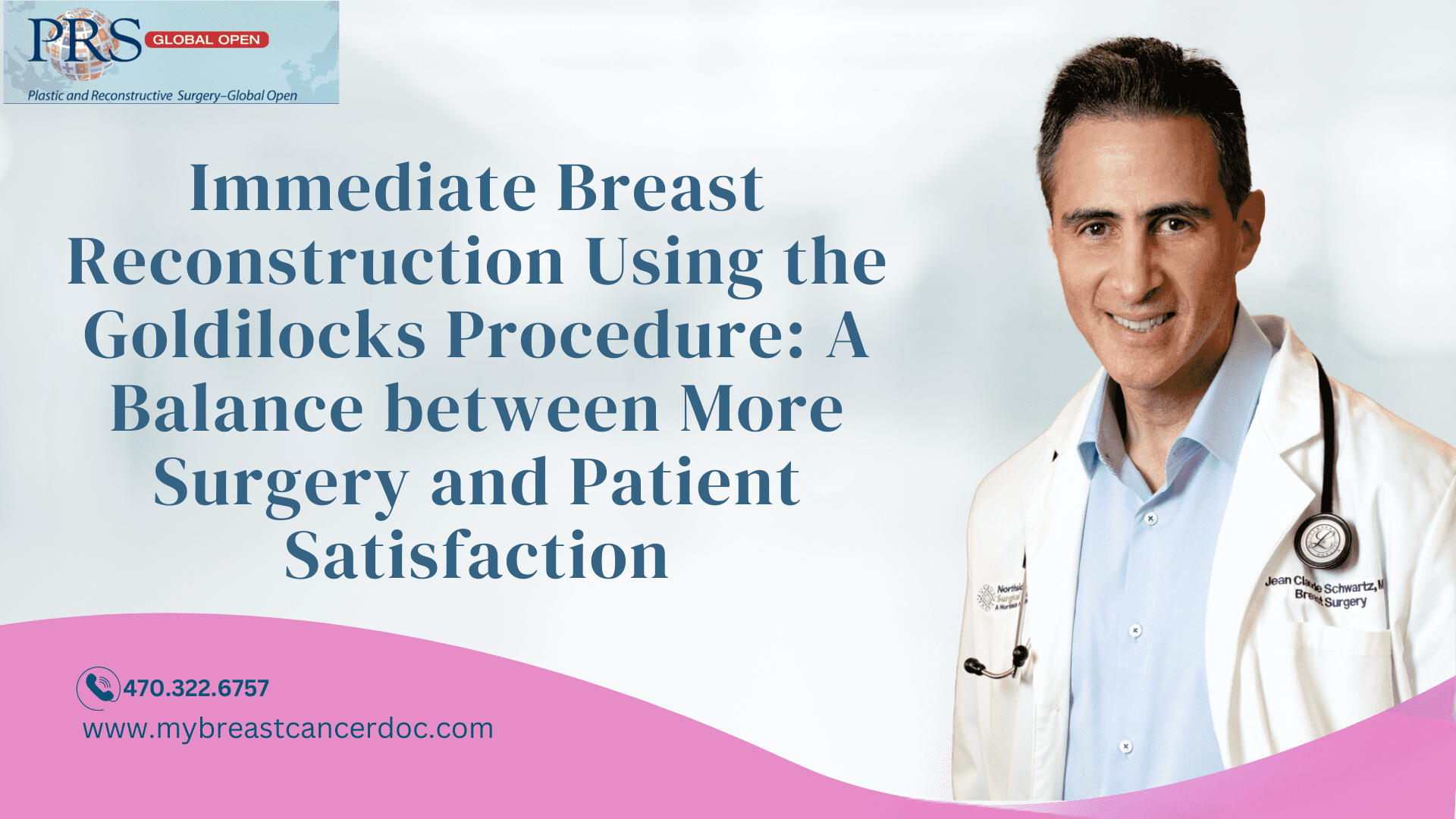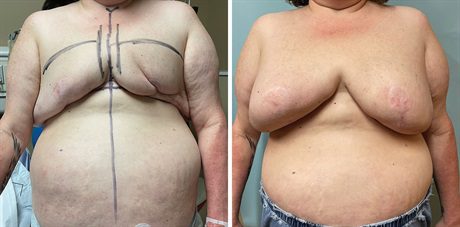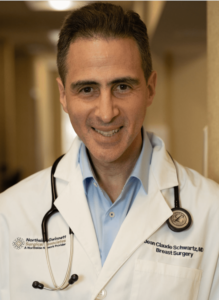Fax: 770-339-9804
Lawrenceville, Georgia 30046


Originally published on PRS Global Open website in April 2023
I read with interest a recent article by Manrique et al. entitled “Immediate Breast Reconstruction Using the Goldilocks Procedure: A Balance between More Surgery and Patient Satisfaction.”1 I congratulate the authors on their long-term follow-up of these challenging cases. They state that although the Goldilocks mastectomy is touted as a single-stage reconstructive option for high-risk patients, nearly 40% of their patients required additional surgery and still had similar satisfaction when compared to the Goldilocks-only group. They conclude that these findings mandate a more comprehensive preoperative discussion regarding realistic results, the need for additional surgery with added risks, and decreased satisfaction.
In my view, there are different types of Goldilocks patients that I encounter in my practice. There are patients who are good surgical candidates but refuse implant-based and conventional autologous reconstruction. They may be overwhelmed by their diagnosis and want to focus on their oncologic care. They may not feel that reconstructed breasts add value to their quality of life and sense of well-being. They agree to the Goldilocks mastectomy because it is safe and does not commit them to additional surgery. It should be emphasized to them preoperatively that their postoperative appearance will fall short of a definitive reconstruction and that additional surgery would be required to complete their reconstruction. Some of these patients, after the initial shock and trauma of dealing with their cancer diagnosis passes, realize that they want to improve their aesthetic outcomes and agree to an implant, flap, or fat transfer. I do not believe that this is a failure of the technique or preoperative consultation, but an evolution in how the patients’ priorities shift as they realize they will likely be cured of their disease. The Goldilocks mastectomy allows them to approach their reconstructive surgery on their schedule and not in a hurried fashion in the first few weeks after their diagnosis.
Poor surgical candidates are often not offered reconstruction or recommended a delayed approach. Although delayed reconstruction results in fewer complications, aesthetic outcomes suffer because the skin envelope is lost. The Goldilocks mastectomy provides a third option between immediate and delayed reconstruction, optimizing the skin envelope to ideal dimensions and ensuring that healing is satisfactory before any further surgery in contemplated. Again, it must be emphasized to the patient that in the overwhelming majority, the Goldilocks mastectomy will not provide a definitive reconstruction. In high-risk patients who desire an optimal result, first-stage Goldilocks mastectomy followed by second-stage implant or flap works reliably well in our hands.2,3 This strategy makes it possible to offer reconstruction to patients who were previously denied surgery and improve the outcomes of those patients who were recommended a delayed reconstruction. For these women, their most significant risk of complication is mastectomy flap healing, and by decoupling this from implant or flap placement, we can improve outcomes (Fig. 1). [See Figure, Supplemental Digital Content 1, which shows a preoperative photograph of the patient (left), an intraoperative photograph (center), and her well-healed donor sites (right). Given her morbid obesity and diabetes, immediate reconstruction is not prudent and, instead, delayed reconstruction after Goldilocks mastectomy (which provides well-healed mastectomy flaps and a reduced skin envelope) is the safest strategy to provide her with a definitive reconstruction, https://links.lww.com/PRS/F729.] The Goldilocks mastectomy was never touted as an appropriate strategy for patients with significant cardiopulmonary comorbidities, and such patients should be discouraged from approaches that may involve multiple operations or even single-stage Goldilocks mastectomy.
 Fig. 1.:
Fig. 1.:
A 44-year-old morbidly obese (body mass index, 52 kg/m2), diabetic, BRCA1-positive female with a multicentric left breast cancer 6 months after bilateral Goldilocks mastectomy and free nipple grafts. Although her right prophylactic side heals without incident, her left side has significant mastectomy flap necrosis and underlying fat necrosis requiring operative débridement and 10 weeks of outpatient wound care. Immediate implant or flap placement would have been ill-advised and would have required explantation of the implant or compromised the viability of the underlying flap. After she finally heals, we can more accurately calculate the skin deficit on her left side and volume discrepancy between the two sides to plan her second-stage flap surgery (this calculation would have not been possible with an immediate reconstruction). Muscle-sparing latissimus dorsi flaps are raised on both sides, for volume on the right side and both skin and volume on the left side. She has an acceptable reconstructive result with reasonable symmetry 6 months after flap surgery. This result would not have been possible in the immediate setting, nor would it have been possible without first performing a Goldilocks mastectomy to extirpate her cancer, retailor her skin envelope, and provide well-healed mastectomy flaps in preparation for her definitive flap surgery. Her initial preoperative photograph along with an intraoperative photograph of her left muscle-sparing latissimus dorsi flap (which provides both volume and skin) and final well-healed donor sites are included in Figure, Supplemental Digital Content 1, https://links.lww.com/PRS/F729.
In summary, patients should be appropriately informed during their preoperative consultations with representative photographs of the expected results after single-stage Goldilocks mastectomy. Patients who find these results suboptimal and are fit for additional surgery should then consider immediate implant or flap reconstruction. They should be reassured that additional surgery can be performed in the future to optimize their outcomes if they are uncomfortable or unprepared for immediate reconstruction. Patients who are not appropriate candidates for immediate reconstruction but desire a definitive result should be reassured that a planned second stage implant or flap after Goldilocks mastectomy is safe and the most appropriate strategy to give them the aesthetic and definitive reconstruction they desire. These high-risk Goldilocks patients should be informed of the increased risk of morbidity and death from planned additional general anesthetics as we inform similar risk patients who we currently offer two-stage implant reconstructions or autologous reconstruction and the invariable need for future revisions and/or contralateral symmetry surgery.
DISCLOSURE
The author has no financial interest to disclose in relation to the content of this communication.
REFERENCES
Jean-Claude Schwartz, MD, PhD – Breast Cancer and Reconstructive Surgeon

As a national leader in oncoplastic breast surgery, Dr. Schwartz has developed and published some of the most innovative ways to save women’s breasts, allowing them to avoid mastectomy and multiple reconstructive surgeries. Dr. Schwartz’s techniques have benefitted his patients and other surgeons around the world.
There is no breast surgical oncologist in the United States that offers the same variety of oncoplastic options, nor has contributed more to the different fields of breast reconstruction than Dr. Schwartz.